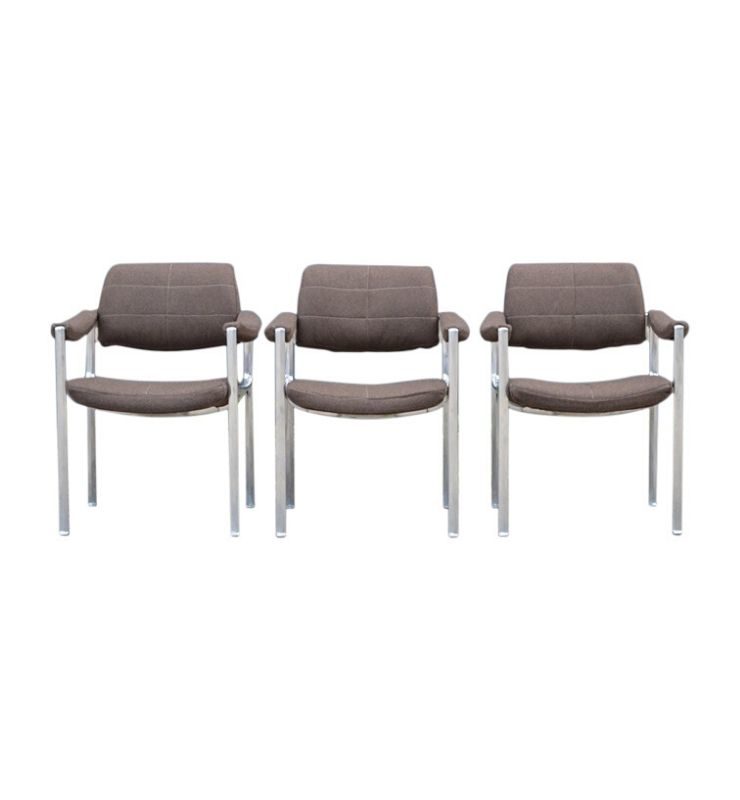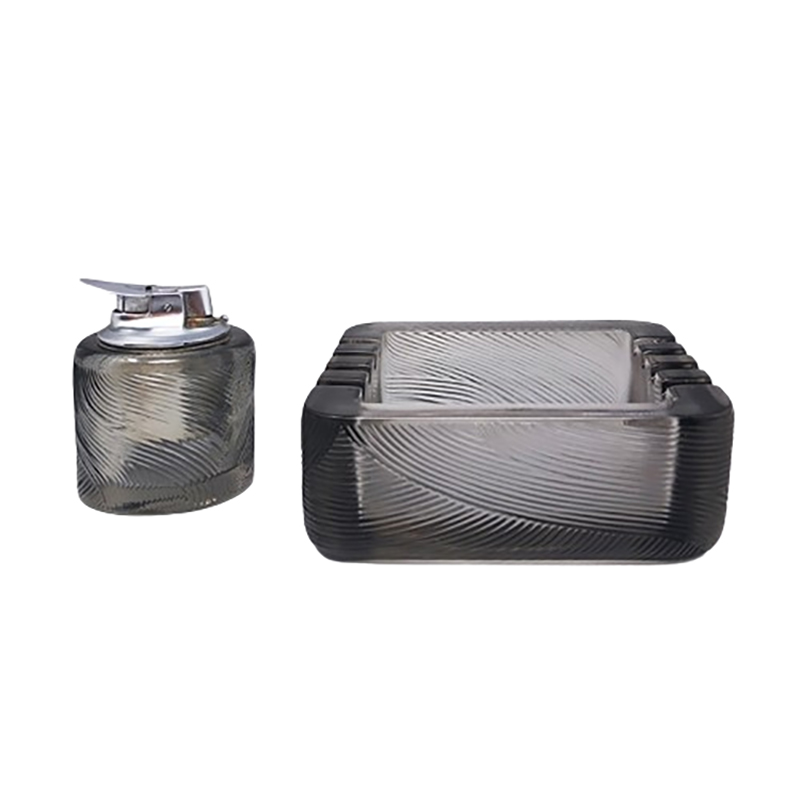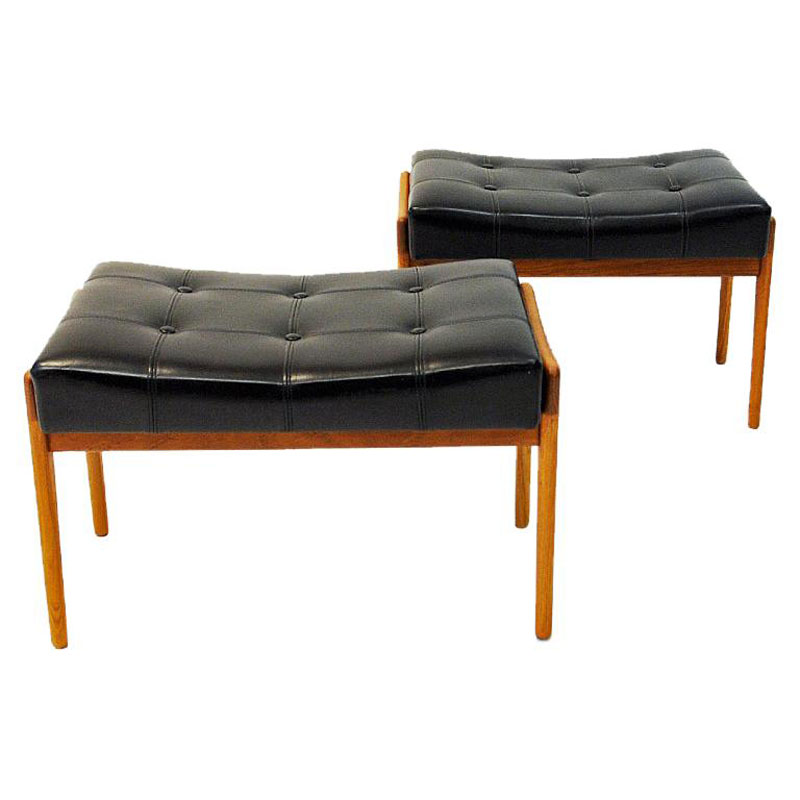Why do so many midcentury modern, postmodern, and neomodern furniture designers insist on creating chairs and sofas with inadequate lumbar support?
Modern and neomodern design are supposed to rationalize design, not just formalize it. What is rational about a chair or sofa lacking adequate lumbar support?
If I were designing a chair, I would evolve the chair's form organically from the lumbar region outward in every direction, rather than act as if the lower back did not exist. It seems so unconsciously Puritanical for designers to remain wedded fundamentally to the back rake and support of a church pugh for so many designs.
In the 6.06 Dwell, there are two marvelous looking pieces of furniture that make my point.
First, Hella Jongerius' polder model sofa by Vitra is absolutely a wonderful to look at, but where in god's name is the lumbar support?
Second, Christophe Pillet's laquered lounge and foot stool are magnificient too the eye, but, hey, show me the lumbar support!
This lumbar blindness seems almost systemic in the modern vocubulary since the time of Mies, maybe since Corbu, maybe since Charles Rennie MacIntosh (recall some of those straight backed dining chairs of his).
And I don't want to get into that debate about some chairs being for looks and some chairs being for use, which I stipulate. Ignore the furniture for looks, if you wish, and focus on the furniture for use.
I don't see any fundamental incapability of the formal vocabularies of modern, postmodern and neomodern gracefully integrate lumbar support into a chair or sofa's form.
Even the reputedly ergonomically correct chairs seem to remain slavish to ancient chair-forms and rely mostly on localized revision of elements of the chair to cater to the lower spine.
Support lower backs.
Design lumbar.
I agree but...
I agree with you for the most part, but the Polder sofa isn't really intended as a sitting sofa for entertaining etc.- it's a well-formed lounge space- for folks like me who can count the number of times they've sat upright on their couches on one hand... it's designed to be stretched out on...
.
My first or second try of an Eames shell was in the MoMA member's cafe at the top of the old museum, c 1955 (?). I recall thinking that it was very comfortable -- until you wanted to settle into a "second posture" after a while.
True lumbar support implies that there is "rump room" below said support, to permit the desired lordosis of the lower spine. I don't know of an Eames fiberglass chair that has this feature.
Chadwick, the Lumbar visionary
.
Me, I'm sitting in an Aeron Chair.
> If I were designing a chair, I would evolve the
> chair's form organically from the lumbar region
> outward in every direction...
If you were designing a chair?
It sounds like a calling. Get to it.
--
In the 1970s Donald Chadwick designed a modular sofa system (the Chadwick) that had good lumbar support. It is no longer in production. See link-

That's funny-
It looks like EQ3 was pretty influenced by that Chadwick sofa...
http://www.eq3.com/cat-eq3/30001-01.html
I like the question...
"...Why do so many midcentury modern, postmodern, and neomodern furniture designers insist on creating chairs and sofas with inadequate lumbar support?...)
Not only because it raises the lumbar support question but also a more general one:
"...Why do so many midcentury modern, postmodern, and neomodern designers insist on creating products with inadequate function?...)
But before entering this generalisation I would like to add some infromation on lumbar support. Although the benefits of some kind of convex curve with its highest point at 8-9" (should be revised to 9-10" because of the "overweight" median)have been known for more than 60 years a real scientific basis was not found untill Bengt Akerblom did his research in the first post WW2 years (1948) and Henri Dreyfuss subsequently published "The Measure of Man" (first in 1959, but based on research started during WW2).
By the way, H. Dreyfuss wrote in his intro to the famous antropometric charts: "When the point of contact between the product and the people becomes a point of friction, then the industrial designer has failed. On the other hand, if people are made safer, more efficient, more comfortable- or just plain happier- by contact with the product, then the designer has succeeded"
The self evidence of the statement is also it's biggest weakness because...people are prepared to make themselves "plain happier" with products that are not necessary more comfortable, safer etc. In fact we do not judge products by there safety standards, comfort etc. Explicitly or implicitly designers know that and especially in case of doubt they will choose for what they think will make people "plain happy".
Of course there is nothing rational about a chair or sofa that lacks adequate lumbar support...well according to later studies (Mandal) you do not need lumbar support when the angle between the torso and the upper legs is more than 105-110 degrees, because above that you are making the transition between the seated position and the standing and when standing you do not need lumbar support. I know,...of course the ever brilliant danish Aagard Andersen designed a lumbar support to be mounted on the wall for support in the satnding position but...that's another story.
A chair is a highly "cultural" object. Used to sit on but abused in every other role imaginable. Almost two decades ago Dr. France Van Laethem and myself organized an exhibition on chairs, not from an historical perspective but classified according to the motivation behind the design of the chair. The category we had the hardest time to find good examples of was the category of chairs designed to sit comfortably.
Mies van der Rohe,Corbusier, Charles Rennie MacIntosh, Frank Lloyd Wright etc. can be excused because they designed in a period in which the antecedents of a chair were mostly satus symbols, but you are very right Don, there is no raison, not even a cultural one, not to include a good lumbar support.
Cont....
Technically we are even capable of doing it in such a way that it is not visible. The back panel could be as straight as the MacIntosh's tea house chairs, but charged with the seated body different parts could flex differently and create the lumbar support....
One of the weaknesses of any of our pro-function arguments is that chairs with akerblom curves or lumbar supports do not seem to be so comfortable that the user recognizes the benefits of that particular shape.
Yes we should "..Support lower backs...)
It is simply rediculous that a separate lumbar support to be added to your office chair, chairs or car seat has become a very succesfull product.
If you need any help, please contact us at – info@designaddict.com









